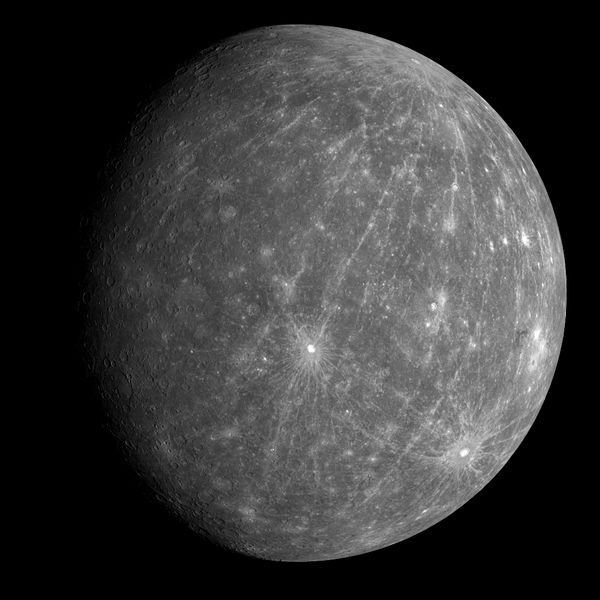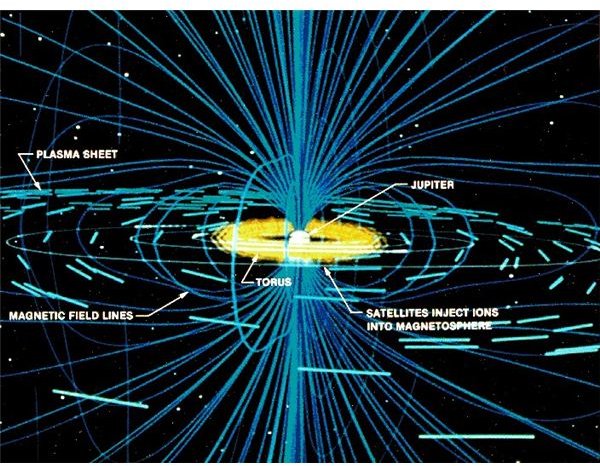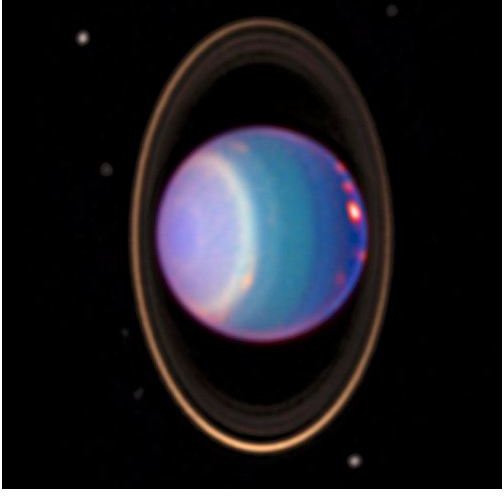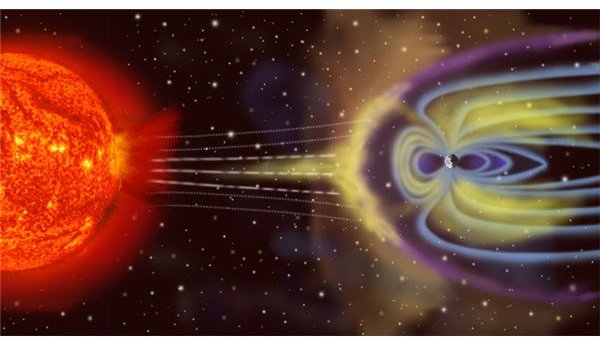Magnetosphere: What Planets Have Magnetic Fields and How Do They Differ?
Planets with Magnetospheres
Many of the planets of this solar system have magnetospheres, including Mercury, Earth, Jupiter, Saturn, Uranus, and Neptune. A magnetosphere depends, in the first place, on a planet having a magnetic field.The Archive of Astronomy explains why some planets have magnetic fields. However, given a planet’s having a magnetic field, it is not a foregone conclusion that every such planet has a magnetosphere. For instance, Venus and Mars have magnetic fields, but they do not have magnetospheres. Why don’t Venus or Mars have magnetospheres? Their magnetic field is too weak to support one. Since Earth’s magnetosphere was the first one known, it would be good to backtrack and determine what a magnetosphere is, and what it does. Then one-by-one the planetary magnetospheres can be better understood.
Earth’s Magnetosphere
In 1958, thanks to the observations of the spacecraft Explorer I, it was recognized Earth has a magnetosphere. It was not yet named, of course, but in 1959 it was given a name based on its shape and size — a size approximately 10 times the radius of Earth. In fact, the magnetosphere is like a deflecting shield, shaped through the interaction of the solar wind, Earth’s magnetic field, and what is called the Interplanetary Magnetic Field (IMF).
The IMF is a product of the Sun’s magnetic field, influenced by its rotation and the electrically charged solar wind. It suffices for the purposes of this article to recognize that it exists and plays a role in the shaping and behavior of planetary magnetospheres.
The overall result is that Earth’s magnetosphere is spherical shaped on the side that faces the sun, but that it extends behind Earth much like a long, wide tail. Earth’s magnetosphere protects life forms from harsh effects of the solar wind. For further information on Earth’s magnetosphere, see the article Facts and Information About the Van Allen Radiation Belt.
Mercury’s Magnetosphere

Since Mercury has no atmosphere to speak of plus it rotates slowly on its axis, it appears likely Mercury’s magnetosphere is more closely coupled to the solar wind. In fact, Mercury’s magnetosphere is only some 1.5 times the radius of the planet. Thus much more energy is transferred from the solar wind to the planet. These and other properties make Mercury’s magnetosphere of great interest to astrophysicists.
Photo: Courtesy NASA/Johns Hopkins
Jupiter’s and Saturn’s Magnetospheres

Possessing the largest magnetic moment of the planets and the most rapid rotation, Jupiter also boasts the largest magnetosphere—at times greater than 100 times the radius of Jupiter itself—unique in certain respects. Add to this the considerably lower density of the solar wind this far out in the solar system, and the magnetosphere reaches extremely large proportions. Because of interactions with its moon Io, the magnetosphere is distorted into something more aptly described as a “magnetodisk.” Jupiter’s magnetosphere is exceptionally dynamic, being constantly in motion.
The planet Saturn, while large, has a much smaller conducting core and resulting magnetic field. Its rotation is considerably slower than Jupiter, and its magnetic field is symmetric with the planet’s axis. Thus Saturn’s magnetosphere is large, but relatively still. The length of Saturn’s magnetotail is expected to be quite long.
Photo: Courtesy NASA
Uranus’ and Neptune’s Magnetospheres

The surprising strength of Uranus’ magnetic field has dispelled some former ideas concerning the makeup of the planet. It was formerly believed there was a highly compressed ammonia and water layer between the core and the upper atmosphere. Uranus’ extreme magnetic axis tilt, coupled with its highly tilted rotational axis produces some fascinating differences in its magnetotail. Rather than merely being cylindrically symmetric, it is corkscrew shaped. The tail extends at least six million miles in length.
Neptune likewise has a large axial tilt. It also has a small core size, but intense atmospheric winds. In addition, its magnetic field is quite strong, about twenty-seven times as strong as that of earth. Its magnetosphere is thus very dynamic, undergoing great variations.
Photo: Courtesy Hubble Site
References and Resources
UCLA - Space Physics Center - Mercury: Magnetic Field and Magnetosphere
Scientific American – Glimpsing Jupiter’s Magnetosphere
UCLA - Space Physics Center - Jupiter: Magnetic Field and Magnetosphere
JPL - Voyager - Uranus’ Magnetosphere
